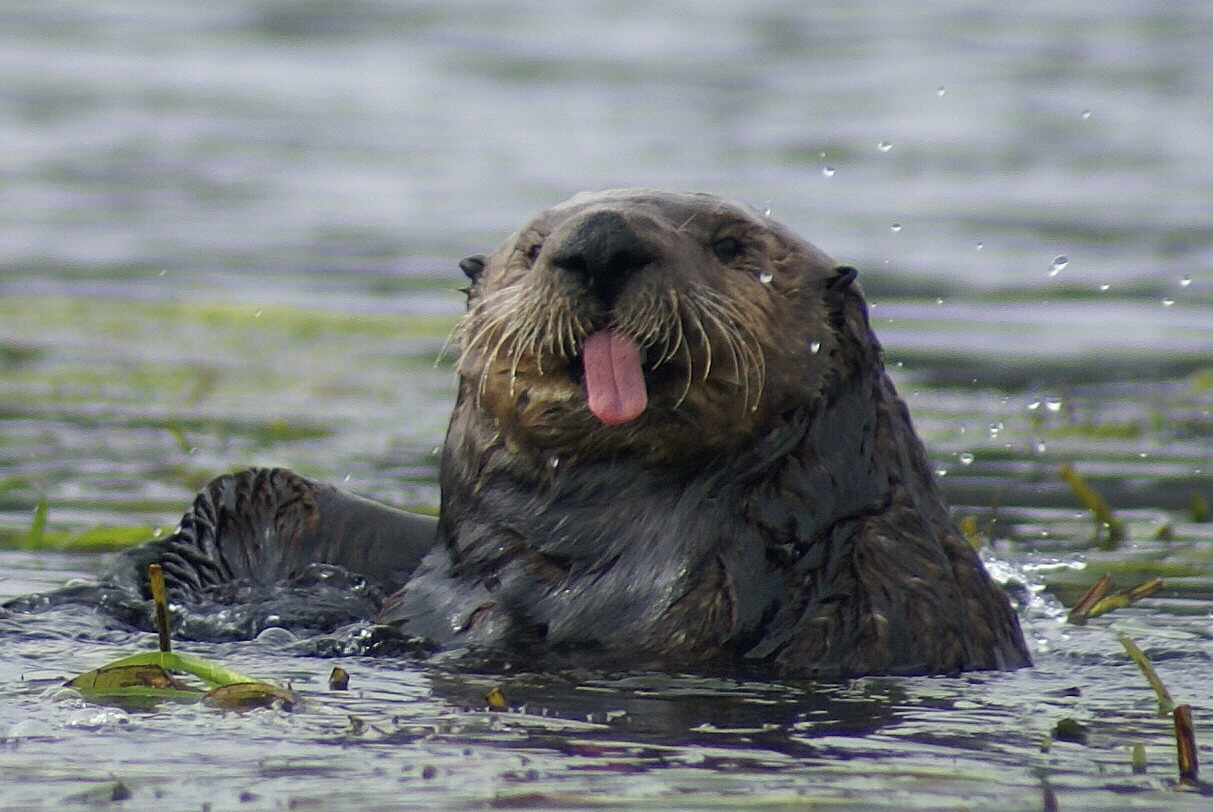Sea otters are endangered due to excessive hunting and habitat degradation. Pollution and fishing nets also pose significant threats to their survival.
Sea otters, known for their playful demeanor and critical ecological role, face a challenging battle for survival. Once hunted voraciously for their luxurious fur, they now confront new adversaries such as oil spills, contaminated waters, and the dangers of bycatch in commercial fishing operations.
Their plight reflects the broader issues affecting marine ecosystems, emphasizing the need for immediate and effective conservation measures. Ensuring the protection of sea otter habitats and implementing stricter regulations against pollution and poaching are crucial steps. With their penchant for maintaining kelp forests and contributing to the ecological balance, safeguarding sea otters is not only about preserving a species but also about maintaining the health of our oceans.
Habitat Loss And Ocean Changes
Sea otters face significant threats due to global warming, which affects both sea ice and kelp forests critical to their survival. The reduction of sea ice compromises their natural habitat and hunting grounds, disrupting their food sources and exposing them to harsher environmental conditions. Kelp forests, which provide shelter and food for sea otters, are also deteriorating because of rising ocean temperatures and changing sea conditions, leading to decreased biodiversity and accessibility of prey for these mammals.
Coastal areas, vital to the sea otters’ wellbeing, are increasingly being developed for human use, encroaching on their natural habitats. Coastal development leads to smaller, fragmented habitat spaces, directly impacting sea otter populations. They struggle to find adequate living conditions, which are essential for their breeding, feeding, and sheltering needs.
Pollution poses another critical threat to otter habitats. Chemical runoff, oil spills, and waste discharge in coastal waters greatly compromise the health and safety of sea otters. They are particularly sensitive to oil contamination, which can damage their fur’s insulating ability, leading to hypothermia, and can also poison them if ingested during grooming. Such environmental stressors significantly contribute to their endangered status.
Threats From Human Activities
Sea otters are endangered largely due to past and present human activities. Historical hunting for their dense, warm fur drastically reduced their numbers. Although now illegal, the repercussions of overhunting still affect current populations. Concerning modern-day threats, otters often fall victim to bycatch, getting unintentionally caught in fishing gear meant for other marine species. This conflict with the fishing industry poses a significant risk to their survival.
Moreover, oil spills continue to be a substantial threat, contaminating the otters’ habitat, which is crucial for their well-being. Otter populations suffer greatly as their insulating fur gets coated in oil, leading to hypothermia and death. Persistent oil pollution in their natural habitats has considerable implications for their long-term survival.
Biological & Ecological Challenges
Sea otters face numerous biological and ecological challenges that lead to their endangered status. Predators like sharks and killer whales, for example, significantly affect their populations. Along with this predation threat, natural events such as storms and sudden environmental changes disrupt their habitat, further putting them at risk.
Compounding these threats are disease outbreaks such as the infamous Toxoplasma gondii parasite, which has caused significant mortality in sea otter populations. Factors such as pollution contribute indirectly to disease vulnerability through weakened immunity. These outbreaks can devastate communities of sea otters, illustrating the fragile balance of their ecosystems.
Within the scope of their long-term survival, genetic diversity plays a crucial role. With lower genetic variability, sea otters become more susceptible to disease, reduced fertility, and limited adaptation capabilities in the face of environmental changes. A diverse gene pool is essential for healthy populations capable of withstanding the myriad of threats they encounter.
Conservation Efforts For Otters
Marine protected areas (MPAs) have been established as safe havens for sea otters and other marine life. These sanctuaries are crucial in mitigating the impact of human activities such as fishing and coastal development. Research indicates that MPAs can significantly increase otter populations by providing an ecosystem with abundant prey and reduced threats.
Concerning wildlife rehabilitation programs, these initiatives play a pivotal role in the recovery of injured or sick sea otters. Rehabilitation centers are equipped to nurse these creatures back to health, often resulting in successful reintegration into their natural habitat. The dedication of veterinarians and volunteers is instrumental in these programs’ success.
Lastly, the importance of public education and awareness cannot be overstated. Informative campaigns and community involvement are foundation stones for long-term conservation success. Educating the public about the otters’ plight inspires active participation in conservation efforts and fosters a culture of stewardship for our marine environments.

Credit: www.mmc.gov
Frequently Asked Questions On Why Are Sea Otters Endangered
What Factors Contribute To Sea Otter Endangerment?
Sea otters face endangerment primarily due to oil spills, which coat their fur, reducing its insulating capacity. Predation from sharks and killer whales also poses a significant threat. Additionally, overfishing by humans depletes their food sources, driving nutritional stress.
How Do Pollutants Affect Sea Otter Populations?
Pollutants in the ocean, particularly from agricultural runoff and oil spills, compromise sea otters’ immune systems. This leads to increased vulnerability to diseases and limits their reproductive success. Toxins also accumulate in their tissue, further impacting health and longevity.
Why Is Sea Otter Habitat Protection Crucial?
Sea otter habitats, mainly kelp forests, are crucial as they provide food and shelter, helping maintain ecological balance. Protecting these habitats ensures the survival of the otters and supports biodiversity. Disruption to these environments directly impacts otter populations.
How Does Climate Change Impact Sea Otters?
Climate change affects sea otters by altering their marine ecosystems. Rising ocean temperatures can lead to habitat loss and shifts in prey availability. This challenges the otters’ adaptability and can lead to nutritional deficits and declined reproduction rates.
Conclusion
Sea otters face a perilous future, yet hope remains. Our actions can turn the tide for these charming creatures. Supporting conservation efforts and eco-friendly choices, we help protect their habitats. Let’s pledge to safeguard sea otters and cherish the biodiversity they represent.
Together, we make a difference.

